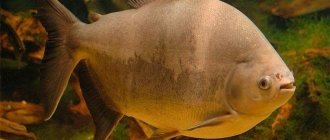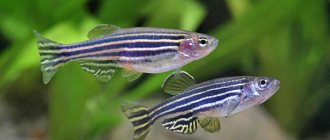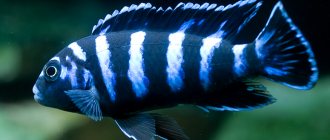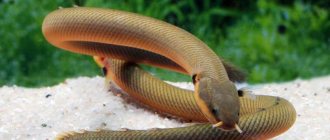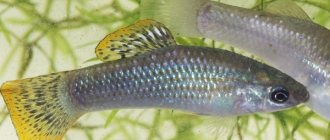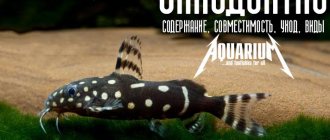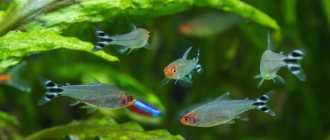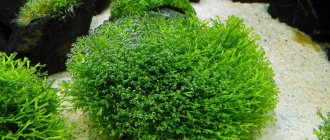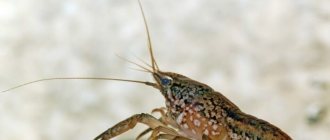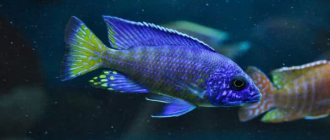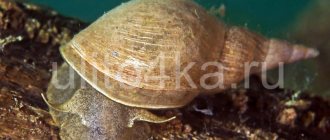long-eared aurelia (Moon jelly, Common sea jelly, Jellyfish) is a species of scyphoid jellyfish from the order Discomedus. Aurelia inhabits the coastal waters of the seas of the temperate and tropical zones. It is found in surface waters both near the shore and far from it. Tolerates a wide range of salinities. The poison contained in the stinging cells of this jellyfish is safe for humans, but causes burning pain and a rash that can last up to 10 days. In Asian countries, aurelia is eaten...
Description
The eared jellyfish is easily identified by its four horseshoe-shaped gonads. The body is gelatinous, 97.8-98.2% consists of water. The dome of a jellyfish is in the form of a round flat umbrella, along the edge of which there are numerous short hollow tentacles and eight marginal bodies (ropalia). The rhopalia contain the eyes and balance organs (statocysts) of the aurelia. The tentacles are studded with stinging cells that kill and paralyze small animals. When looking at the dome from above, you can see the stomach, consisting of four pockets and digestive canals radiating from it.
Article on the topic Hydrozoa
Rhopalia are the sense organs of the jellyfish and determine its position in the water and the rhythm of the umbrella contractions. Four thickened oral arms, each with a central groove flanked by more diluted curled lips. By detecting infrasounds, rhopalia warn the jellyfish about the approaching storm and allow them to move away from it. The body of the aurelia is two-layered (consists of two layers of cells - ectoderm and endoderm), with a well-defined gelatinous mesoglea. The mouth is located in the middle of the lower side of the body, it leads into the pharynx, from which the intestinal cavity begins. Undigested residues are removed through the mouth. The sex of a jellyfish can be determined by the size of its mouth lobes. In females, the blades are much larger, since they have chambers in which the larvae develop. The nervous system of a jellyfish is more developed than that of polyps. In addition to the nerve plexus, which is most developed in the tentacles and on the underside of the umbrella, two nerve rings run along its edge. The gonads are located near the stomach or radial canals.
Keeping jellyfish in an aquarium
Breeding aurelia at home has its own nuances. Jellyfish require a special tank that provides a smooth circular flow, in which they will not be afraid of collisions with objects encountered on their way. This is an extremely important point, since the delicate and soft body of the long-eared aurelia can easily be damaged even by a minor blow. Finally, you need to keep in mind that the aquarium must be spacious enough, otherwise the jellyfish will not be able to fully expand their body.
The specificity of keeping aurelia in an aquarium also lies in the fact that there should be no aeration in the container , since air bubbles, penetrating under the jelly-like dome, can disrupt its integrity, and this can lead to the death of a living creature. No additional lighting is also required; one decorative lighting will be quite enough.
Jellyfish love algae
Jellyfish can be kept in conditions of minimal water filtration. To maintain its quality at the proper level, it is simply necessary to regularly change the contents of the aquarium. Jellyfish do not take root in water that contains a lot of organic matter and nitrogen compounds. Aurelias do not like it when other stinging animals (for example, hydras) are introduced to them.
In terms of food, these creatures are completely unpretentious. Suitable for them:
- phytoplankton;
- seaweed;
- finely chopped seafood.
However, specialized stores always have ready-made food available, designed specifically for such aquarium inhabitants. As practice shows, the Aurelia eared jellyfish feels good in captivity. Some aquarists not only successfully keep them, but also breed them, observing all stages of development.
In this video you will learn more about jellyfish:
Lifestyle
The long-eared aurelia leads a pelagic lifestyle and is found in surface waters both near the coast and far from it. Tolerates a wide range of temperatures (from -6 to 31°C) and salinity (from 6 ppm). The optimal temperature is 9-19°C. It moves in water according to a reactive principle, pushing water out of body cavities. Floats horizontally in the water column. Single organism. Sometimes eared jellyfish form extended dense clusters.
Stages of development
The eared jellyfish is a dioecious coelenterate animal that gives birth only once in its entire life, after which it dies. An interesting fact is that aurelias show a kind of care for their brood, which cannot be said about other representatives of scyphoid jellyfish. The life cycle of a marine animal consists of several stages:
- A two-layer embryo developing in an egg.
- Larva (planula).
- Polyp.
- Adult.
Adult – last stage
In a female suspended in water, the oral lobes are lowered, so the eggs emerging from the mouth opening penetrate into special gutters, move along them and end up in pockets, where they are fertilized and further develop. Gradually, the embryo becomes covered with cilia, which help it swim, and eventually transforms into a larva.
For some time it stays in the water column, and then sinks to the bottom and is fixed on it with the help of the front end. A mouth with tentacles emerges from the upper part of the body, and the larva turns into a polyp, visually resembling a hydra. At the next stage, its division occurs, which is provided by transverse constrictions that cut into the body. This is how young aurelia appear.
Reproduction
The eared jellyfish reproduces sexually. Jellyfish with purple or pink gonads are males, and those with yellow gonads are females. Reproductive products (sperm and eggs) mature in the gonads located in the pouches of the stomach and are released through the mouth into the water, after which they enter the female’s body, where fertilization occurs. Fertilization of eggs and their development occur in the brood chambers. The egg develops into a mobile larva - a planula, which attaches to underwater objects and there turns into a single polyp. The polyp subsequently begins asexual reproduction. It breaks into several disks, which turn into jellyfish. This is how jellyfish alternate generations: asexual (polyp) and sexual (jellyfish). The life cycle is dominated by the jellyfish form, and the polyp is a short-term form of existence. A few months after breeding, the jellyfish die. Breeding season in autumn. Puberty occurs at about 2 years of age. From fertilized eggs, larvae are formed - planulae, covered with cilia.
How to determine the sex of Aurelia?
No complications! Like races according to the size of the oral cavities. In females, the blades are somewhat larger because they contain chambers in which the larvae develop. In heterosexuals, sperm and eggs mature in the gonads in the pouches of the stomach. Males release mature sperm through their mouths into the surrounding water. From which they penetrate into the brood chambers of females. In the latter, fertilization of eggs occurs followed by their development. Then the fully formed planula larvae leave the hatching chambers and swim in the water column for several days. Then, having attached to the substrate, the larva transforms into a single polyp (scyphistoma), which actively feeds, growing larger and larger in size and acquires the ability to multiply endlessly, budding off daughter scyphists. With the onset of spring, the process of transverse division begins - strobilation (one of the types of asexual reproduction, in which new individuals are formed through the rearrangement of the body of the parent individual. In polyps, strobilation is characteristic of representatives of scyphonds and cubozoans) jellyfish larvae - ethers - are formed. In appearance, they look like transparent stars with eight rays, which lack marginal tentacles and oral lobes. The ethers break away from the scyphist and float away, turning, in fact, into jellyfish by mid-summer.
Future life
Jellyfish lead a pelagic lifestyle. And they are most often found in surface waters both near the coast and far from them. Sometimes they form entire clusters. Aurelia long-eared is a eurybieptic species. Withstands both temperature fluctuations and water salinity. That's why they are widespread. Her food is always, as they say, at hand. These are small zooplankton. The dome of the jellyfish smoothly contracts and drives zooplankton towards the mouth lobes. Their lower edge is seated with short mobile tentacle-like outgrowths containing stinging cells. With their help, food is caught, paralyzed and sent straight to the mouth. At one time it was believed that Aurelia eared was not dangerous to humans. But recently there have been cases of quite severe burns in the Gulf of Mexico and off the coast of Great Britain. There, signs are posted on the beaches warning about the danger of Aurelia honey. As for the Russian shores of the Black or Azov Seas, no special incidents associated with this type of jellyfish have been recorded near them. And if in some cases there were burns, they quickly went away, as if you had accidentally been burned by nettles.
The structure of the jellyfish Aurelia
Don't let the goodness go to waste!
At least that’s what they think in the countries of Southeast Asia and specifically in China, Thailand, Indonesia, Korea, etc. An amazing example to confirm this fact is that in 2001, Japan imported more than ten tons of edible jellyfish, including aurelia. eared. The Land of the Rising Sun satisfies its needs for this delicious product through Indonesia, Malaysia, Myanmar, the Philippines, Singapore, and Vietnam. In total, more than 320 thousand tons of jellyfish in different types are eaten in the world every year. Even the US state of Georgia exports this exotic product. And China even grows jellyfish in artificial reservoirs, then releases them into the sea for food and catches enough grown individuals, some of which will not fit in a large bucket. At the same time, the country not only exports the delicacy to other countries, to Japan, for example, but also offers it for food to compatriots. And this has been happening for over 1700 years! What kind of dishes are prepared from jellyfish! Salads that are even served to airline passengers; sushi in Japan, noodles in Thailand and, not surprisingly, ice cream there, for which jellyfish are first soaked in milk, then dried and ground into powder. And students from the city of Obama developed a recipe for making real candies from jellyfish. Alas, in Europe or here in Russia, jellyfish are not eaten. But in vain: they contain so many microelements beneficial for health that you can simply be endlessly surprised - the entire periodic table, and in large quantities: after all, these sea creatures pass through themselves per day tons of water, which contains these microelements, and quite a lot of them remain in organism. Note that on the same coast of Anapa the beaches are considered healing. And not only because in the off-season, and sometimes even in the summer, they are literally shoveled by storms and enriched with sea salts. Microelements are brought into the sand by kamoka (seaweed) and, of course, by jellyfish washed ashore, which under the hot sun turn into an integral part of the sand. And it effectively treats ailments of the musculoskeletal system, radiculitis, rheumatism, cardiovascular and other diseases. The beaches of Sochi, Gelendzhik, Tuapse, Taman are considered therapeutic, be they sandy or pebbly or rocky: all of them. And finally about Aurelia - Eared briefly about interesting facts from the life of jellyfish.
Immortal jellyfish
Yes, yes, there is one! From the hydromedusa family. Its full name is Turritorsis Nutricula. Upon reaching adulthood, the jellyfish sinks to the bottom of the sea or ocean and transforms into a polyp. New formations develop on it, from which jellyfish are born. Revivals can continue indefinitely, the only thing that can stop them is a predator that will attack and eat a unique sea creature.
Watch out for some jellyfish!
The very first of them is the sea wasp. It is found off the coast of Australia and Indonesia. Almost transparent and therefore invisible in the aquatic environment. Fifty centimeters in diameter. She has twenty-four eyes, six dozen tentacles. Sees the victim perfectly. Can sting in several places at the same time. In three minutes it can send up to sixty people to the next world! The poison of Physalia Portuguese is dangerous for humans. In appearance it resembles a boat under sail. But it’s better not to come into contact with her. It is interesting that among these sea creatures there are simply incredible sizes. For example, Cyanea. Imagine - 37 meters long or the longest creature on the planet. True, its bite is not fatal, it is more like a bee's. But it may well cause a painful shock, an attack of terrible allergies. When traveling near the sea coast, we recommend staying away from jellyfish such as Sea Nettle, which lives in the waters of North America, the Atlantic and Indian Oceans. Irukandji - in Australia and Oceania. Lion's mane - in all the northern seas of the Pacific and Atlantic oceans, Pelagia nocturnal - in the Red and Mediterranean seas, the Atlantic and Pacific oceans, the already known corner - the Black and Azov seas, the Middle and Western parts of the Atlantic Ocean, in the waters of China and California. Jellyfish Alatina alata - between the Atlantic and Pacific oceans, off the coast of Pakistan and India. Nomura, which lives off the coast of Russia, Korea, Japan and China, is also dangerous to humans.
I
The poison contained in the stinging cells of the long-eared aurelia is safe for humans, but causes burning pain and a rash. The pain is similar to a nettle sting in both sensation and duration. Immediately after being stung, a person experiences pain that can last up to half an hour. Within 3 minutes, itching begins at the point of contact with the body of the jellyfish and a small rash appears. Not all populations of these jellyfish are equally poisonous; some are more poisonous. Thus, a rash from a Caribbean aurelia sting can last up to 10 days. The venom of the eared jellyfish has a hemolytic effect, destroying red blood cells.
Cyanea
The Barents and White Seas are home to a cold-water giant, the cyanea; the umbrella of this huge jellyfish can reach 2 meters in diameter. The central part of the umbrella is yellowish and the edges are dark red. These jellyfish shimmer with a faint greenish color. The mouth opening is surrounded by sixteen wide oral lobes, crimson-red in color. Cyaneas have long tentacles up to 20-40 meters, light pink in color. When the cyanea spreads its tentacles, the trapping network of them covers 150 square meters.
Under the bell of these jellyfishes, haddocks, cod fry and other fish calmly swim, which under this dome find shelter and food - a variety of microorganisms living on the body of the jellyfish.
If a person touches the tentacles of cyanea, he will experience pain that goes away only after 40 minutes, in addition, quite serious lesions can occur on the skin.
Equorea jellyfish
Among the jellyfish there are also luminous representatives. If a large number of jellyfish accumulate in the water, at night it seems that green or blue balls light up from time to time.
Equorean jellyfish live on the Pacific coast of Russia, as well as on the Atlantic coast of the United States. The glow of these jellyfish makes the waves seem to be on fire. And in tropical and moderately cold waters, luminous pelagia of the nightglow live.
Under the “dome” of a jellyfish, fry of various fish can live.
There is an interesting relationship between jellyfish and small fish. When immersed in water, you can see small horse mackerel swimming next to the cornet jellyfish. When divers approach the fish, they instantly hide under the dome of the jellyfish, through which their bodies can be distinguished. The fry do not touch the stinging cells located on the tentacles of jellyfish, so jellyfish for them are a reliable shelter from numerous predators. But some careless fry nevertheless become victims of stinging cells, in which case the jellyfish calmly digests them.
But the relationship between eared jellyfish and Black Sea horse mackerel is completely different - small fish happily gnaw at the dome of the jellyfish. Aurelia makes weak attempts to avoid danger, but when the fish swim away, all that remains is the upper part of the dome and a small fringe along the edge. Other fish also do not miss the opportunity to pinch eared jellyfish.
If you find an error, please select a piece of text and press Ctrl+Enter.
Interesting Facts
Jellyfish aurelia is often used in medicine. Laxatives and diuretics were produced from it in the Middle Ages. And today, from the poison contained in the tentacles of animals, drugs are produced to regulate blood pressure and treat various pulmonary diseases.
Farmers in the Caribbean use physalia poison as a poison for rodents.
Jellyfish allow you to effectively cope with stress. They are bred in special aquariums in Japan. The leisurely, smooth movements of animals calm people, but keeping them is very expensive and troublesome.
Luminophores isolated from jellyfish are used for biochemical analysis. Their genes were transplanted into various animals, for example, rodents, due to which biologists were able to see with their own eyes previously inaccessible processes. Because of this action, the rodents began to grow green hair.
Some jellyfish are caught off the coast of China, where their tentacles are removed, and the carcasses are kept in a marinade, due to which the animal turns into a cake of thin, delicate, translucent cartilage. In the form of such cakes, animals are taken to Japan, where they are carefully selected for quality, color and size and used in cooking. So, for one salad, the jellyfish is cut into small strips 3 mm wide, they are mixed with herbs, stewed vegetables, and then poured over with sauce.
Robot jellyfish also appeared there. They, unlike real animals, not only swim beautifully and slowly, but can also “dance” to music if the owner wishes.
